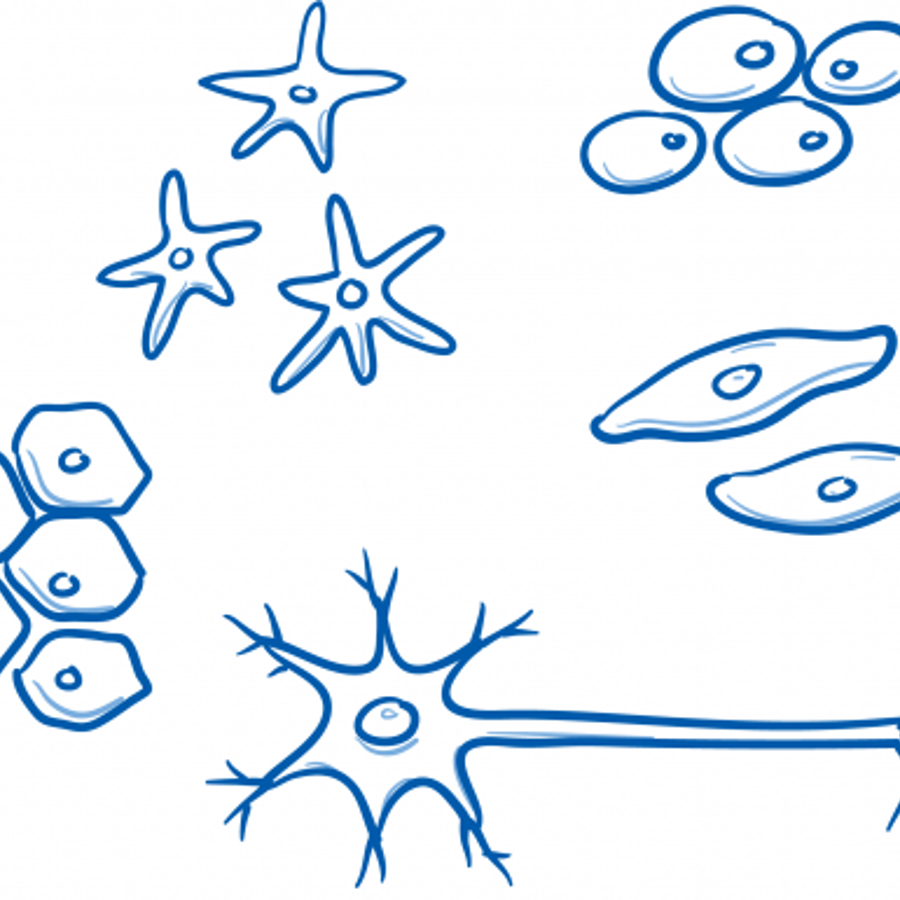
If all the cells in my body have the same DNA, then why don’t all my cells look the same?
February 27, 2004

- Related Topics:
- DNA basics,
- Epigenetics,
- Developmental biology
A curious adult from California asks:
"If all the cells in my body have the same DNA, then why don’t all my cells look the same?"
This is a great question! As you probably already know, all of the cells in your body started from a single cell.
That single cell then divided many, many times to turn into the 50 trillion or so cells that make up you. Almost all of the cells in your body share the same DNA as was found in that first cell*.
So if they have exactly the same DNA, why are eyes and lungs so different? The answer lies with what DNA is and how it works.
Your DNA contains all of the information needed for making you. This information is stored in the over 20,000 human genes found in almost all your cells.
To get at the information, a gene must be turned on (expressed) and the information turned into something useful, a protein. Once made, that protein goes out into the cell and performs some set of specific tasks. For example, hemoglobin, a protein found in red blood cells, carries oxygen to cells and carbon dioxide away.
For a cell to work, 1000's of these proteins must be made, each doing its particular job. Eyes and lungs are so different because different sets of proteins are made in the various eye and lung cells. In other words, in the eye, genes are turned on for seeing and the "breathing" genes are off. In lung cells, the situation is reversed.
A useful analogy is that of a recipe book. Even though all of the information is in the book to make lots of different dishes, a cook will only use the souffle recipe to make a souffle. In a similar way, even though DNA contains lots of recipes, only those needed to make and run an eye are used in an eye.
*Some exceptions are:
1) Mature red blood cells which contain no DNA
2) The sperm and the egg that have half the amount of DNA
3) B cells in which some of the DNA has been rearranged to make antibodies.
Read More:
- Khan Academy: Introduction to cellular differentiation
- Yourgenome.org: Intro to stem cells, which haven't "decided" yet which type of cell to become

Author: Dr. D. Barry Starr
Barry served as The Tech Geneticist from 2002-2018. He founded Ask-a-Geneticist, answered thousands of questions submitted by people from all around the world, and oversaw and edited all articles published during his tenure. AAG is part of the Stanford at The Tech program, which brings Stanford scientists to The Tech to answer questions for this site, as well as to run science activities with visitors at The Tech Interactive in downtown San Jose.
 Skip Navigation
Skip Navigation
